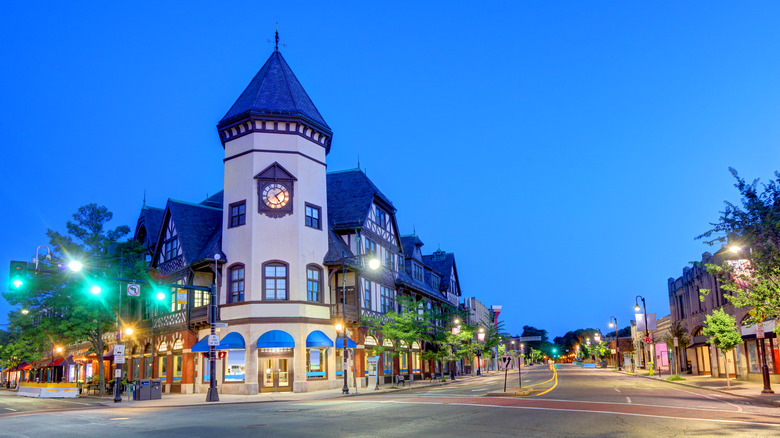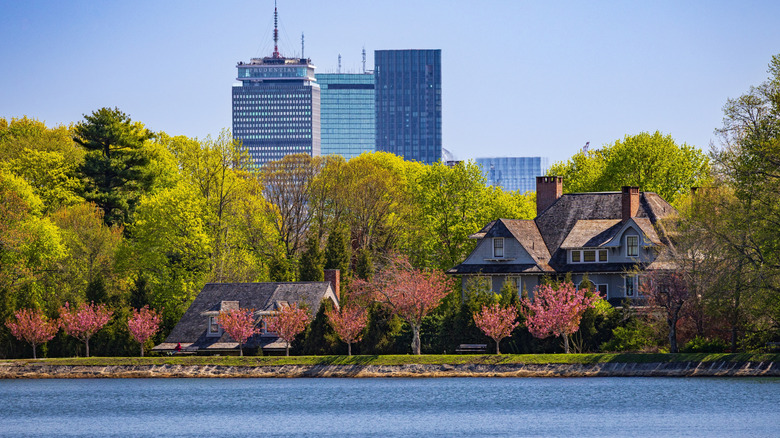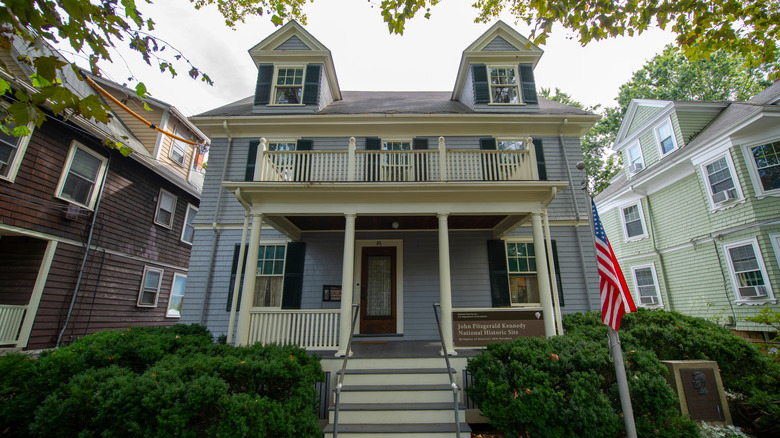This Quaint East Coast Town Boasts Historic Charm & The Highest Quality Of Life In The US
Massachusetts is brimming with some of the most charming towns that New England has to offer. Visitors flock to places like Norton, a safe college town with great fishing, the historical and witchy Salem, and Cape Cod for its lighthouses, resorts, and oyster farms. One town has stood out from the crowd as one of the best places to live: Brookline. In fact, U.S. News & World Report just ranked it as the number one best place to live in the United States for its high quality of life. Often described as a suburb of Boston, the town is just about 8 miles by car from Boston Logan International Airport. It's roughly a 15-minute drive in good traffic, and you can hop in a taxi or use a ride share app like Uber. Alternatively, you can take the Green Line on the MBTA subway (known simply as "the T" to locals) to reach Brookline in about 30 minutes from central Boston.
First incorporated in 1705, Brookline evolved from colonial farmland into an affluent, cultured community, with architecture, landmarks, and green spaces that summon New England's past. All the while, it has kept modern comforts, including strong schools and close access to Boston's job market and cultural institutions. Brookline is not simply a charming place to visit, but among the very best places to live in America.
Brookline's historic charm goes beyond nostalgia
Walk through Brookline, and you'll encounter living history in every neighborhood. Coolidge Corner, Beacon Street, and Harvard Street all offer beautifully preserved architecture, local shops, cafes, and walkability rarely found in suburbs. You can find historic spots like the John F. Kennedy National Historic Site at 83 Beals Street, where the 35th U.S. president was born, as well as the Frederick Law Olmsted National Historic Site, the former home and office of the father of American landscape architecture.
Another jewel is Brookline Reservoir Park, serving both as a peaceful green retreat and as a piece of civic infrastructure history. Its gatehouse and aqueduct elements are among the best-preserved from the 19th-century waterworks that once supplied Boston. Similarly, the Edward Devotion House (built in the mid-18th century) is still maintained by the Brookline Historical Society and gives visitors a glimpse into colonial life.
These attractions are not just for history buffs; they help shape Brookline's aesthetics, its sense of place, and its appeal. People who choose Brookline are choosing a place steeped in heritage — iconic buildings, leafy streets, parks designed by pioneers — but also one where that past is integrated into daily life, not frozen in a museum.
Culture, costs, and what to expect in Brookline
High quality of life is more than history and leafy streets; it shows up in schools, services, and culture, too. Brookline's public schools consistently rank among the best in Massachusetts, and its hospitals — including Boston Children's and Brigham and Women's, both minutes away — are globally recognized. Not to mention, public transit via the MBTA Green Line makes it easy to hop into Boston, but many residents and visitors find there's little reason to leave.
Brookline has a thriving dining scene that reflects its diversity and sophistication. A must-try is Zaftigs Delicatessen in Coolidge Corner, a beloved spot for overstuffed pastrami sandwiches, blintzes, and matzo ball soup. For something more upscale, La Morra offers handmade pasta and rustic Italian cuisine in a cozy setting. You should also plan a stop at Publick House, a craft beer mecca with Belgian specialties and an extensive beer list.
Culturally, Brookline punches above its weight. The Coolidge Corner Theatre, one of the last remaining Art Deco cinemas in the U.S., screens independent, foreign, and classic films daily and hosts regular live events. Local galleries, bookshops, and performance spaces, such as Puppet Showplace Theater, add layers of charm and creativity. Brookline is also home to several synagogues, churches, and cultural centers that reflect its rich immigrant history and community spirit. For visitors, hotel rates generally run between $210 to $300 per night, with boutique inns and national chains available. Fall foliage season and university commencements drive prices up, so plan accordingly. And if you're craving more nostalgia, check out our list of small towns that will transport you back to the 1960s.


